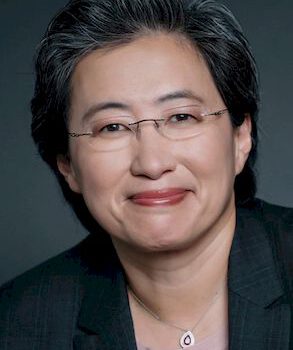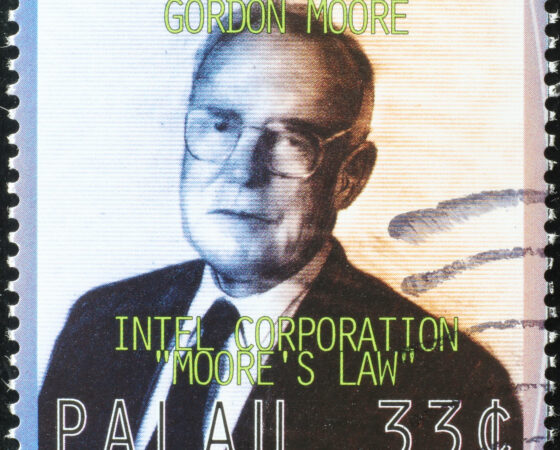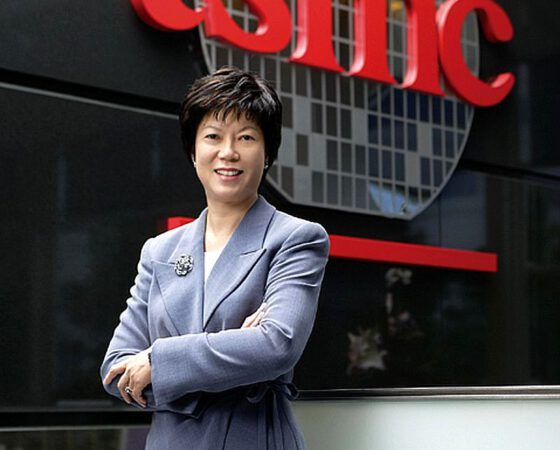Techworks Asia will be highlighting the achievements of Asian women in tech, in forthcoming articles. The start of this series comes at a timely moment in history, as Kamala Harris becomes the first person not just of colour but of Asian ethnicity to take the office of Vice President of the United States of America. This first post takes a look at the formidably distinguished career of Lisa Su, President and CEO of AMD

Lisa Su, currently CEO and President of Advanced Micro Devices (AMD), has an impressive versatility that allows her to be both an electrical engineer and a successful businessperson. Born in Tainan, Taiwan, Su emigrated to the US aged three, later studying at the renowned Massachusetts Institute of Technology (MIT), majoring in Electrical Engineering. Her focus became semiconductors, and in particular pioneering research in Silicon-on-Insulator (SOI) technology. In 1994, she attained a PhD at MIT, with her thesis entitled “Extreme-submicrometer silicon-on-insulator (SOI) MOSFETs”.
Working initially for Texas Instruments in 1994, in its Semiconductor Process and Device Center (SPDC), she switched to IBM in 1995, where she was appointed VP of IBM’s Semiconductor Research and Development Center. As head and founder of IBM’s Emerging Products division, she ran a startup company focused on biochips and ‘low-power and broadband semiconductors’. Their first product was a microprocessor that improved the battery life of phones, and MIT Technology Review named her a “Top Innovator Under 35”.
Through the division, she also represented IBM in a collaboration with Sony and Toshiba to create next-generation chips. Su’s team proposed a nine-processor chip, which later became the Cell microprocessor used to power devices such as the Sony PlayStation 3.
Comes the time, comes the person
Following a spell as SVP and GM, Networking and Multimedia, at Freescale Semiconductor, Inc. in 2012, Su became SVP and GM at AMD, followed by promotion to president and CEO, in 2014. Over the past six years in these roles, Su has been credited with turning AMD around from a mere ‘also ran’, when compared with Intel Corp., to a much more highly competitive and diversified company, replacing regular quarterly losses with profitability. In stark headline terms, Su is credited with pulling AMD back from the brink of disaster and transforming a seemingly doomed enterprise into a formidably competitive player.
To put this in perspective, while both AMD and Intel are based in Santa Clara, their real affinity is their core focus on computer processors, CPUs, based on the x86 instruction set. Both companies have faced formidable challenges in attempting to compete in the low-power mobile space, while demand for PCs has declined. When Su was elevated to CEO and President, many in the industry assumed that AMD would soon be no more, a dying David succumbing to both a changed market and the Intel Goliath.
Zen and the art of semiconductor design
To the industry’s astonishment, as a semiconductor design engineer Su ushered in a new CPU architecture, “Zen”, whose Epyc server iterations for the high-growth data-center segment directly challenge Intel’s dominance on performance as well as cost. This is while Intel, for some five years now, has been plagued with process difficulties, notably at 10-nanometer line widths, while AMD’s Zen chips are effortlessly fabbed by Taiwan’s TSMC at the 7-nanometer node.
With AMD’s Q3 2020 results, gross margin was 44%, while revenue at US$2.8 billion jumped 56% YoY and 45% QoQ. Newly announced Radeon graphics chips 6900- and 6800 XT would be competitive with those from leader Nvidia, while latest iteration 5xxx Zen CPUs compete with Intel’s offerings, and not simply on price. The flagship 5950x will have leadership both on the desktop and in value per dollar. Reportedly, the CPU sold out within minutes of its launch.
Furthermore, AMD dropped an industry bombshell when it confirmed a US$35 billion all-stock acquisition of FPGA maker Xilinx, in a reminder to Intel that its acquisition of Altera no longer posed any significant market advantage in the transition to ‘big data analytics’, ML, and ubiquitous AI “inferencing”, whether in the ‘cloud‘ or at ‘the edge’.
This has been a remarkable performance in leadership by Su, and, as our American friends might say, “She isn’t done yet”. Both Intel and Nvidia had better watch out!






